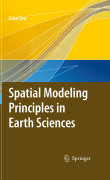
Spatial Modeling Principles in Earth Sciences presents fundamentals of spatial data analysis used in hydrology, geology, meteorology, atmospheric science and related fields. It examines methods for the quantitative determination of the spatial distribution patterns. This book brings together the material from the current literature in earth sciences and practical examples. It provides asound background of philosophical, logical, rational and physical principles of spatial data and analysis, and explains how it can be modeled and applied in earth sciences projects and designs. It collects information not previously available in one source, and provides methodology for the treatment of spatialdata to find the most rational and practical solution. The book contains a comprehensive overview of up to date models for utilization in earth sciences and their applications. A significant part of the book consists of original techniques developed and presented into open literature by the author. Additionally, many unique physical approaches, field cases, sample interpretations are presented prior to application of different models. Examines spatial statisticaltechniques, their fundamentals and logical basis Brings together information not previously available in one source Investigates major problems in spatial analysis Provides methodology for the treatment of spatial data INDICE: Chapter 1 - Introduction.- Chapter 2 - Data Types and Logical Processing Methods.- Chapter 3 – Classical Spatial Variation Models in Earth Sciences.- Chapter 4 – Spatial Modeling.- Chapter 5 - General Applications.
- ISBN: 978-1-4020-9671-6
- Editorial: Springer
- Encuadernacion: Cartoné
- Páginas: 530
- Fecha Publicación: 01/03/2009
- Nº Volúmenes: 1
- Idioma: Inglés
